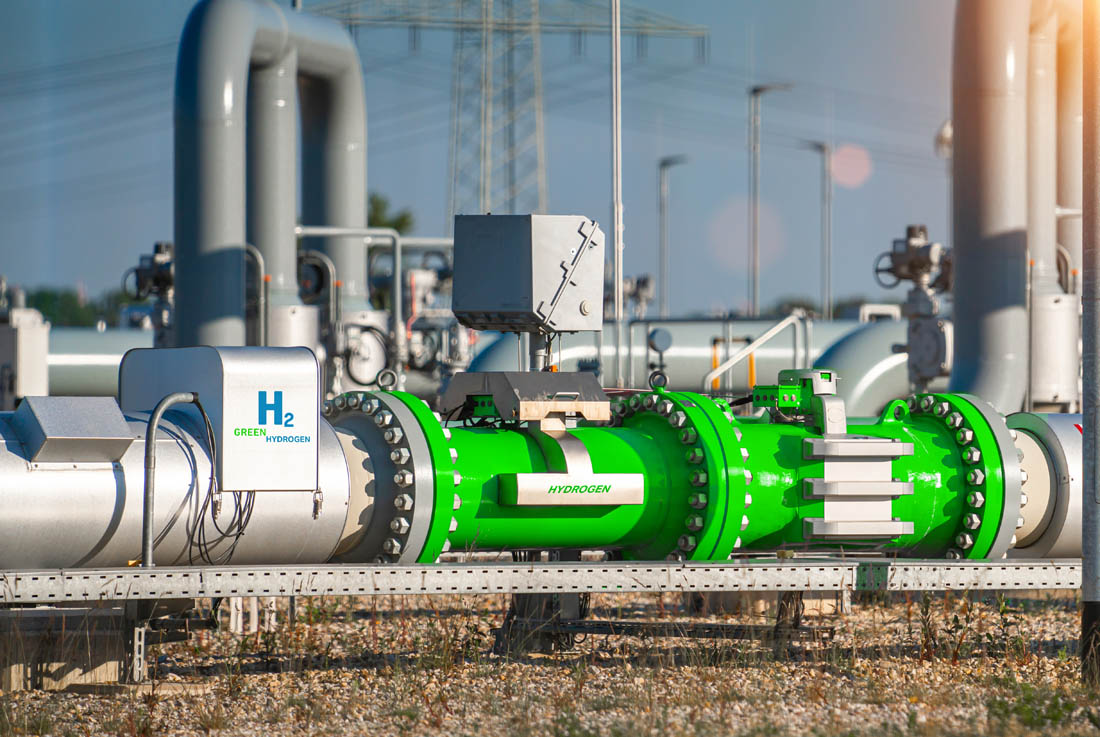TICKERS: BP, CVX, E, XOM, CHMF; SVST, SHEL
Rick Rule: Caution, Extreme Volatility Ahead
Source: The Energy Report (12/7/10)
 Always well ahead of the pack, legendary investor Rick Rule presages major volatility in the energy markets. "I can guarantee this," he says, "over the next two years, we're going to experience unbelievable volatility." In this Energy Report transcript from his Dec. 3 webcast, Rick dissects the gamut of energies—from fossil to alternative—revealing an interesting paradox that is a "game-changer" for uranium, why he calls alternative energy "the alter ego of rare earths" and an international wild card in oil. Christmas comes early for knowledge-hungry investors, as Rick's altruistic counsel presents nothing short of a gift. To find out how to profit from the coming turbulence, read on.
Always well ahead of the pack, legendary investor Rick Rule presages major volatility in the energy markets. "I can guarantee this," he says, "over the next two years, we're going to experience unbelievable volatility." In this Energy Report transcript from his Dec. 3 webcast, Rick dissects the gamut of energies—from fossil to alternative—revealing an interesting paradox that is a "game-changer" for uranium, why he calls alternative energy "the alter ego of rare earths" and an international wild card in oil. Christmas comes early for knowledge-hungry investors, as Rick's altruistic counsel presents nothing short of a gift. To find out how to profit from the coming turbulence, read on.
Jeff Howard (CEO, Global Resource Investments): Ok ladies and gentlemen, I'd like to welcome you to today's broadcast. I've got Rick Rule here and we're going to spend a little bit of time talking about energy. First off, uranium—uranium prices had a tremendous move a few years ago, going up from, what?—$8 a pound to well over $120. Prices backed off considerably to $40/lb. around July, and since have moved up to about $61/lb.—a 50% increase in six months. Did we miss the boat or what?
Rick Rule: We haven't missed the boat but, to me, being 50% up means 50% less attractive. When we talked several broadcasts ago, I thought uranium stocks and uranium prices were table-pounding cheap. They are no longer table-pounding cheap, but I think they have room to go up. Later in this discussion, we're going to talk about the energy sector generally but let me lead off by saying that, for five years I've been very, very bullish on energy—all forms of energy. To me, uranium is one of the most attractive forms of energy.
One of the things that's interesting is that, although new plant construction is not progressing well in Europe and North America, it is progressing better than I had anticipated—and I was bullish—in East Asia. New plant construction in the People's Republic of China, South Korea, Japan and Taiwan is progressing well despite the fact that the long-term prognosis for uranium doesn't supply existing plants, let alone new plants. That sets up an interesting paradox in uranium; if you're building or financing a plant now, what you have to do to secure financing of the plant is obtain long-term contracts that give you enough uranium supply to amortize the loan out over 15, 20 or 30 years or for the duration of the term. Interestingly, that means the long-term price of uranium (i.e., contracted uranium prices) is above and sometimes substantially above the spot price; thus, uranium consumers are paying a premium over market to lock in long-term supplies. This is important because for the first time in my career, relatively small companies that make a significant uranium discovery can finance the discovery into production without selling it to a multinational mining company because these consumers—large power companies and utilities—are willing to assist in financing the mine in return for an offtake agreement. This is a game-changer for the uranium exploration sector.
The second thing that makes uranium particularly attractive to me is that vast amounts of money were raised in the stupidity of the uranium bull market that occurred four–five years ago. As is normal, most of the money was wasted but some was spent intelligently. As a result of the 25-year bear market that existed in uranium prior to the bull market, not much exploration had been done for 25 years. Consequently, there was lots of low hanging fruit and the money that was raised has begun to find it. That means we're in a discovery cycle in uranium at the same time the long-term outlook for uranium producers is the brightest it's been in my 57-year lifetime. This is a very bullish set of circumstances looking forward—just 50% less bullish than it was six months ago because the price of admission has gone up.
We are extremely attracted to the uranium business in the next five-year timeframe, though the rising tide will not float all ships. Remember that most of the 500 companies purportedly looking for uranium four years ago were run by management teams that couldn't even spell uranium. The benefit associated with the market conditions that I'm describing will be extremely constrained to a very small group of companies, probably no more than 20.
JH: Ok, so those are the sectors that have done very well in the last year or so. Let's talk about some of the sectors that haven't done as well because that's usually what you migrate toward. Alternative energy jumps out as one—geothermal and hydro developers have actually done fairly well in the field from what I can tell, but not in the market. Considering the BP Plc (NYSE:BP; LSE:BP) oil spill back in spring and everyone talking about reducing our dependence on fossil fuels, you'd think this market would have gone on fire. But it hasn't happened. What's the outlook?
RR: Well, I think energy is where it's at for the next five years. I think energy prices are going to surprise people to the upside, and all forms of energy—nuclear, alternative, oil and gas (O&G) and the great bête noire, coal—are going to work. I think they're going to work for a couple of absolutely inescapable reasons. We've talked about this in the webcast before, but there are two billion people around the world who aspire to the lifestyle that we enjoy and that lifestyle requires energy. Unlike 20 years ago, those people can increasingly afford to compete with us for those energy supplies. That's a long way of saying that people in central India would enjoy the lifestyle you have and, increasingly, at least their children are competing with your children on a very, very direct basis; more per-capita demand for energy spread over literally billions of capitas. Not enough energy to go around, so the price is going to go up—no doubt about it.
On the supply side, there are also challenges, at least challenges if you're a consumer. The thing that carries the day is oil and gas, particularly oil because it can be used as a motor fuel. Most people believe oil is produced largely by the big multinational oil companies—Royal Dutch Shell Plc (NYSE:RDS.A), Exxon Mobil Corp. (NYSE:XOM), Total (NYSE:TOT), Chevron Corporation (NYSE:CVX) and Eni S.p.A. (NYSE:E). That's not true; most oil worldwide is produced by national oil companies (NOCs)—companies controlled by politicians—the people who can't deliver the mail, can't deliver you future energy security. This is exacerbated by the fact that some of the national oil companies that have large supplies of oil and generate large free cash flows are not—and have not for a decade—reinvested enough working capital to sustain their current production. In fact, they've looted the patrimony of their oil business to fund politically expedient domestic programs. The countries I'm referring to include predominantly Mexico, Venezuela, Ecuador, Peru, Indonesia and probably Iran. Those six countries generate between 20%–25% of global export supply.
Within the next five years, I believe that group of countries will cease to be petroleum exporters. Unless—and this is the wild card—Iraqi production kicks up to replace that supply (something that, from a political point of view, looks doubtful now) or the Saudis, Kuwaitis and the United Arab Emirates are able to increase their supplies enough to offset these declines, we have a situation wherein 20%–25% of global export crude supply comes off the market while demand for export crude is increasing 1.5% per year. Dramatically reducing supplies in the face of steadily increasing demand can only do one thing to oil prices—push them higher. And as oil prices go higher, I believe it will raise all energy pricing.
While demand for oil as motor fuel is increasing, worldwide demand for electricity is also increasing and this phenomenon is not limited solely to emerging markets. The United States and some parts of Western Europe are facing electrical energy shortages. Brownouts have become common during summertime peak demand in the U.S. So, increased demand for electricity is no longer limited to citizens of countries that you can't pronounce; it's happening right here in the good ol' USA. So, although energy, electricity, oil are nowhere near as sexy as rare earth elements (REEs), unpronounceable commodities, gold or silver, I think these prices have to go higher—not just can go higher, but have to go higher.
Let's start off with alternative energy, which is sort of the alter ego of rare earths. The fundamentals in this sector are extraordinary, but the market performance has been terrible—the mirror opposite of REEs. I am attracted particularly to the alternative energies that actually work and work without subsidies, meaning geothermal and run-of-river hydro.
Money will be made in wind and solar because the population demands these uneconomic sources of energy in their quest to be green. But, as we've discussed before, these forms of energy have very real problems. In the case of solar energy, the insurmountable problem is night; it relies on the sun. Wind power, on the other hand, requires constant and steady wind, which isn't something that exists in many places around the world. However, there will be money to make in both wind and solar.
Nobody ever went broke underestimating the stupidity of various governments, but the real money will be made in industries that do not require subsidies, particularly geothermal. The geothermal stocks have performed poorly for a variety of reasons. Two years ago, expectations for the stocks probably got ahead of themselves; but, more importantly, these are very capital-intensive businesses. A lot of money has to go in the front end before cash flows are developed, and it's the analysis of future cash flows that causes these stocks to go up. I suspect most of the front-end money needed to establish the validity of the sector has now been contributed, and I expect geothermal news flow will be extremely attractive over the next six months.
In the next two years, I expect the geothermal industry will continue to consolidate and rationalize. In fact, my fear in the geothermal industry is that consolidation takes over before it has a chance to mature and give us the values that we want. I see all the current geothermal juniors, at least those we follow, selling at substantial discounts to what I believe is the net present value (NPV) of their realizable cash flows. We are starting to see that by off-balance sheet deals; two geothermal juniors recently made off-balance sheet funding deals with large utilities and/or power producers that value the companies' assets at strong premiums to the net asset values (NAVs) suggested by their market caps. So, I am very, very attracted to the geothermal side.
Unfortunately, there aren't many names to play; and those of you who require momentum, immediate gratification or sort of a rationalization or justification regarding near-term share price advance will not like the geothermal sector whatsoever. Those of you who remember the success we had buying uranium stocks early in the last decade—when nobody cared about them—and selling into the spectacular run-up that followed might have more of a sense of humor about geothermal stocks. I think those of you who do have that patience will be very, very well rewarded, particularly juxtaposed against the risks you will take.
JH: Let's talk about the gas market wherein the North American shale plays have somewhat kept the lid on gas prices for the last year or two, and everyone thinks it's going to happen for the foreseeable future. So, does that limit investment opportunities in natural gas or can we still make money here?
RR: Oh, absolutely not. I think natural gas is where I'm really going to concentrate. I suspect I am two years early, but I've found that being two years early definitely increases my ability to negotiate private placement deals with very attractive pricing teams and with full warrants, in particular.
Jeff, what you say about natural gas prices being on hold is true. The technology associated with the North American shale plays has really been a game-changer in natural gas. Natural gas critics say, "Rick, we aren't going to see $10 or $12 gas again for a long term, like 10 years or 12 years." I think that's right, unless we see a huge debasement of the dollar; but what's interesting to me is we don't have to see $10 gas. If we see $6 or $7 gas, some of these producers will make astonishing amounts of money.
If you are producing gas and selling it in a $3.50 market and making a cash margin, if not profits—let's say, for instance, that at $3.50 gas you are making $0.50 per million cubic foot (MCF) in cash flow—not profit but $0.50/MCF in cash flow—that's your cash margin on sunk costs. And let's say you're buying this company at 50% of book when the company is enjoying the $0.50 margin, you, the new buyer, are buying costs that were sunk by earlier investors at much higher costs. If the gas were to go from $3.50 a thousand cubic foot (TCF) to, say, $6/TCF, the price you're receiving for your gas just about doubles; your margin goes up just about fourfold or fivefold. That is tremendous internal torque, but what's more important is that some of these companies have 800, 900 or 2000 proved, undeveloped locations that have no NPV at $3.50/TCF because you wouldn't drill them. But they could be worth $40,000, $50,000 or $60,000 per location at $6–$7/TCF. So, in addition to having the leverage associated with the cash flows off the developed reserves, the real torque is in proved, undeveloped locations.
How do we turn this into money at Global? What we'll try to do is find the best of the unloved in Canada—companies below the radar screens in Canada with market caps below $400 million, that are gas- rather than oil-centric, that have enough oil or liquids-rich production that we can finance them and they can drill off their liquids-rich lands in the next year and a half or two while gas is in the doldrums. We can get partial ownership of the proved undeveloped gas locations, which will have extraordinary value three–four years from now.
We have identified several companies in Canada, though we haven't yet talked them into doing financings at these prices. They're uniformly selling at 50%–60% of book, and they're extremely leery to issue equity to us at these prices; but we suspect we can hold out longer than they can. In one case, this company is selling for 20% of the price it was selling for three–four years ago. In another case, the company is selling at—I'm not kidding you—10% of the price it sold for four–five years ago.
Compare and contrast this with the market performance we've seen with more-popular sectors. Does it make sense to you that a better risk/reward parameter can be found buying a profitable, well-capitalized company in an out-of-favor sector at 50% of book, selling at 10% of its price four years ago or buying a very hot sector at 10x book 7x or 8x the price it was four–five years ago?
I believe the real money is made by skating well ahead of the pack, and that's what we're trying to do in conventional oil and gas. I believe oil prices will go higher and that oil prices drag gas prices higher. I also believe currently low gas prices will constrain both shale and conventional gas drilling and that the flush production that haunts the gas markets now will go away as rigs get stacked in response to these low gas prices. I expect the snapback in gas prices two–three years from now will be dramatic. By dramatic, I don't mean to $10–$12; I mean to $5 or $6. A snapback in gas prices to $5 or $6 could give us tenfold returns on some of these highly unpopular gas producers from their current market caps. Next year, if I'm able to negotiate private placements in companies at 50% of book with full warrants at small premiums to the price at which we do financings, I believe we'll enjoy or at least have the potential to enjoy 10-for-one returns with full warrants, which can be a 15, 16 or 17-full return over the three–five year timeframe. I'm extremely excited about this opportunity.
JH: Earlier, you mentioned coal; we don't talk about the black stuff very much. Give us your thoughts on the coal markets.
RR: Well, it's extremely unpopular. Politicians rail against it, the media points out that it's a four-letter word, but that may be intended in the pejorative sense rather than the literal sense. And while all that's been happening, the price has doubled. People say all kinds of bad things about coal but when they walk in and hit the switch, they want the light to go on; without coal, the lights don't go on. Many parts of the world do not have access to lights that go on and they want the lights to go on, and they want steel. They want all the things that energy produces.
Right now, both India and China are critically short on coal supplies for their existing electrical infrastructure, which they're trying to grow as we speak. Despite everything bad you read about coal—I'm not trying to say there aren't certain aspects of carbon pollution that aren't bad—but despite everything you read about it, the demand for coal is running substantially ahead of supply. People want steel and electricity, and the rising tide in energy prices is going to float all ships, including the coal ship.
So, we will be looking at all forms of energy, including coal, on a going-forward basis. Some of you remember the success Sprott Resource had in the 2007–2008 bear market, when successes were hard to come by, and it achieved a fivefold return on its shares in PBS Coals, prior to being taken over by Russian steelmaker OAO Severstal (CHMF:RU) in a very bad market. We'll be looking for opportunities to participate, particularly in export grade and, of course, metallurgical coal on a going-forward basis, despite the fact it's unpopular or perhaps because it's unpopular, but profitable. We'll be looking carefully at the coal markets going forward.
JH: You mentioned volatility earlier. Let's talk about your feel for this market; it's been a wonderful time over the last three months. What do you think? Where are we?
RR: Volatility is the most important part of today's discussion. I can't guarantee anything with regards to energy prices; I have my superstitions. I can't guarantee anything about oil or gold prices. What I can guarantee is this—over the next two years, we're going to experience unbelievable volatility—unbelievable volatility. I believe we're one-half or two-thirds of the way through a commodities super cycle, in a secular bull market; the broad economy is in a secular bear market. I think the collision between secular bull and bear markets is going to resemble that of two very large weather systems. . .we are in for a period of absolutely unbelievable turbulence.
In the last couple of months, we've seen a 20%–25% upsurge in precious metal (PM) prices. For those of you predisposed to believe that PM prices were going to go up, this doesn't feel like volatility to you. It feels like a rational or justified response to your brilliance; but believe me, some of this is volatility. For some reason, people aren't as sanguine about 20% downmoves as they were about 20% upmoves, but we're going to get a lot of both. And over the next two years, I suspect that 20% moves will be considered "tame" moves.
I think we're going to see 30%, 40% and 50% moves attributable solely to volatility, not to underlying events. The underlying events are already baked in the cake. Specifically, I think we'll see moves in the junior market up and down of 20% for no reason whatsoever simply because in the near term there are more buyers than sellers or more sellers than buyers. I think 50% moves are probable rather than possible. Now what does this mean for you? Given that volatility will occur, in my mind you have two choices: 1) Accept, embrace and use it; or 2) Get waxed. Those are your choices. Our theme has been that of contrary or victim—the choice is yours, that's the way it works with volatility.
What is volatility? In markets, volatility is a series of repeated sales. Buying goods on sale is always preferable to buying goods at retail. Volatility will give you precisely the opportunity to do that. It also does something else—it gives you the ability to mark up the goods you bought on sale and sell them to other people for a price that is substantially dearer than the price that you had to pay. To do that, you have to manage your own temperament, be disciplined and pay attention to reality—not the noise of the market. It's human nature when you buy a stock for $2 and see it go to $4 that a couple of pleasant circumstances occur. In the first instance, you feel smart; that's nicer than feeling stupid. In the second instance, when you see it on your statement, you like that stock; it went up, that stock gives you pleasure. It is fighting that instinct that causes you to make money. If a stock goes up, if a stock doubles, for any other than truly spectacular reasons, you need to understand as a consequence of doubling, the stock is precisely half as attractive as before it went up. The fact that it went up makes it less attractive on a going-forward basis. It is dearer, and you have to fight your tendency to like the stock that's gone up. You have to make yourself take profits.
At the same time, the stock that you liked at a $1 falls to $0.50. When you look at that stock on your statement, it makes you feel stupid. You see this stock on your statement, which may be a bargain, but to you it's a dog, a mistake, maybe evidence of your own failings and frailty. Never mind failings and frailty. If nothing else has changed, it is precisely twice as attractive at $0.50 than it was at a $1. Most people's temptation will be to sell the stock that's twice as attractive rather than hold the stock that's twice as attractive.
The nature of profiting from volatility is being on the other side of the trade. When panic is in the market and good companies are priced down, you have to have the courage to not only stay the trade but also increase the bet. During periods when you're completely sanguine and really aggressive you need to shake yourself and say I need to take some profits here. Everybody remembers how bullish they felt in 2006, how we all confused the bull market for brains; and everybody has to remember how they felt in September, October and November of 2007 when the market went no bid. We didn't feel so smart then. Had we simply felt a little less smug in 2006 and a little more aggressive in 2007, we would all be substantially wealthier than we are today.
Bear that in mind because this market is going to be extraordinarily turbulent and volatile; it, consequently, will give you extraordinary opportunities to either make or lose money. Whether you make or lose will not be a function of the market. Volatility is not a risk; it is a tool. The risk is located east of one of your ears and west of the other. It will be a function of your response to the volatility whether the next two years are extremely pleasant or unpleasant for you.
JH: Ok, thanks Rick. We have to go back to work.
Note: This article covers the energy sector portion of Rick Rule's interview. Read Rick's thoughts on precious metals on The Gold Report.
Rick Rule, founder and CEO of Global Resource Investments, began his career in the securities business in 1974 and has been principally involved in natural resource security investments ever since. He is a leading American retail broker specializing in mining, energy, water utilities, forest products and agriculture. Rick's company has built a national reputation for its specialist expertise in taking advantage of global opportunities in the oil and gas, mining, alternative energy, agriculture, forestry and water industries. This article is based on his Global Resource Investments webcast, Friday, December 3.
Want to read more exclusive Energy Report interviews like this? Sign up for our free e-newsletter, and you'll learn when new articles have been published. To see a list of recent interviews with industry analysts and commentators, visit our Expert Insights page.
DISCLOSURE:
From time to time, Streetwise Reports LLC and its directors, officers, employees or members of their families, as well as persons interviewed for articles on the site, may have a long or short position in securities mentioned and may make purchases and/or sales of those securities in the open market or otherwise.



































